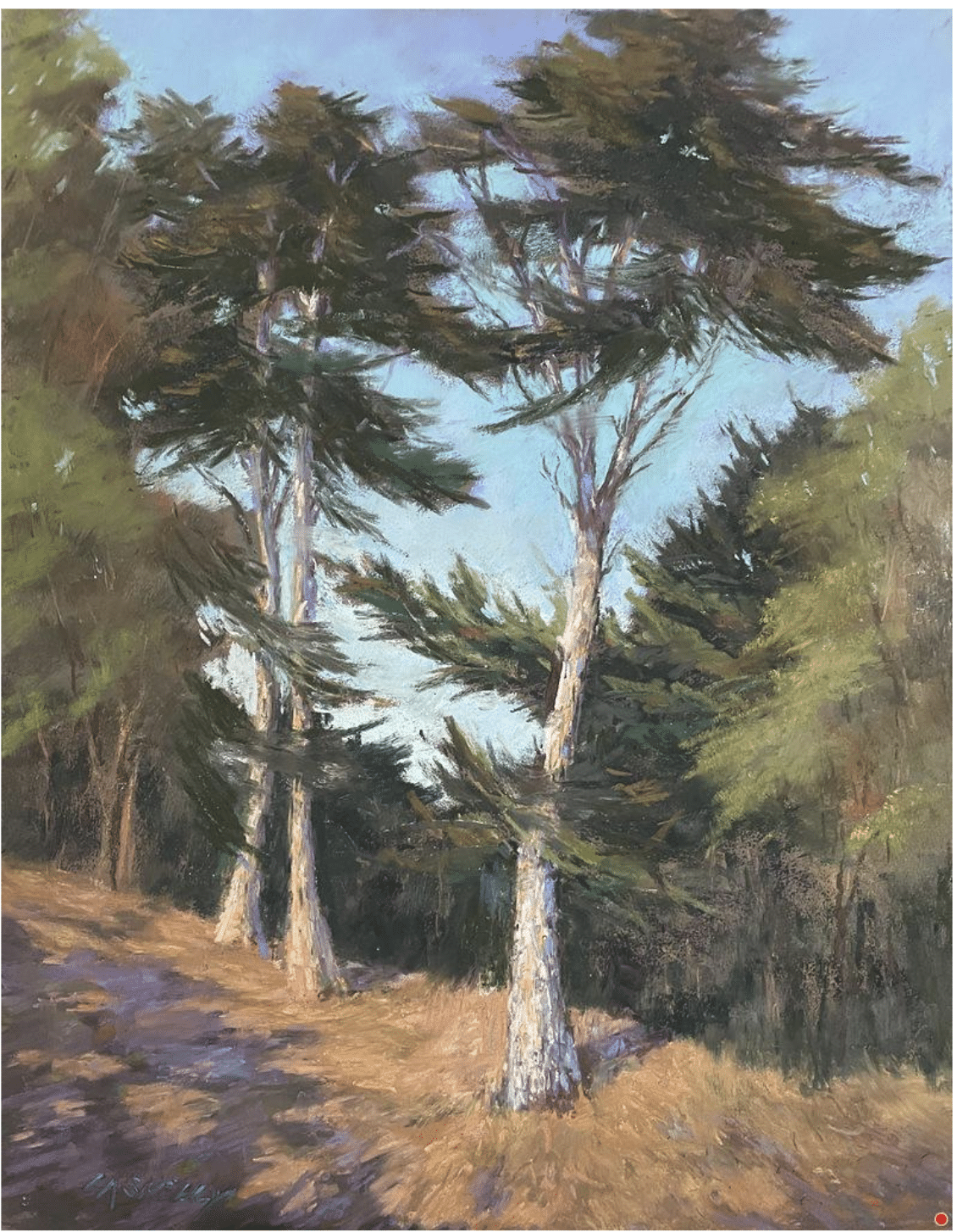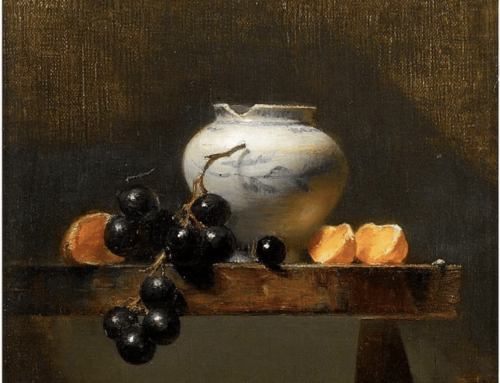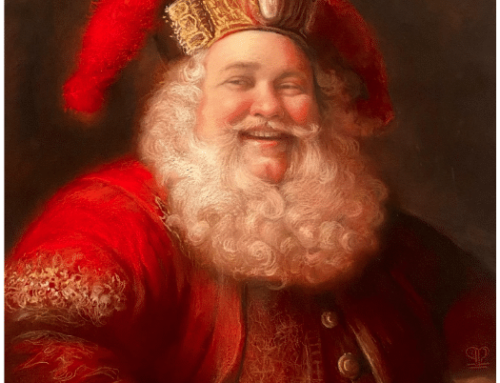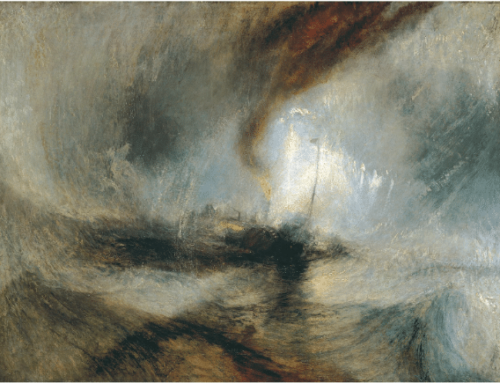For anyone building an art career, individual successes and failures often can feel like “live or die” moments. Dealing with setbacks is part of the job description. One of the best strategies may be to focus on the secondary benefits that accrue from simply staying in the game long enough to see them.
Lisa Skelly runs The Huse Skelly Gallery, a gallery in California speciliazing in plein air, currently celebrating 25 years. Lisa herself has entered many art competitions, many times, win, lose and get back up again. Lisa is now judging a competition she almost talked herself out of entering, namely the monthly PleinAir Salon. She advises anyone feeling the tug of entering art competitions to enter repeatedly and soak up the additional benefits (besides winning) so as not to become overly invested in each competition.
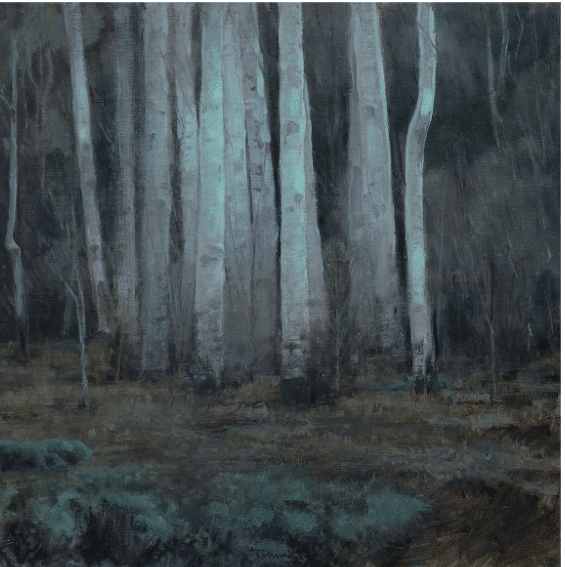
Seth Tummins, Nocturne, was among the “Top 100” judge’s picks in the November 2023 PleinAir Salon. Learn more about his work here.
When it comes to Art Competitions, is it worth entering?
By Lisa Skelly
Well, it may seem an obvious answer, but there is more to entering than getting an award. Don’t get me wrong, an award is an amazing honor and validation of your hard work and talent. Of course it feels great to win! What if you could grow as an artist and gain even more than the big prize by putting your proverbial ‘hat in the ring’?
There are wonderful additional benefits to entering art competitions. Here are some things that I look to learn about my own work by contemplating these questions:
1.) Visibility as an artist: Putting your work out there consistently will get you noticed. Believe me when I enter an art competition, I’m looking at all of the other entries. Which ones are my favorite and why?
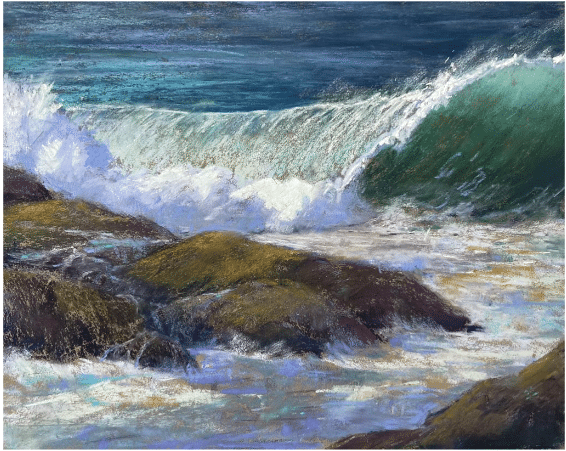
Lisa Skelly, Sunny Surf, soft pastel, 8” x 10”
2.) Opportunity for improvement: What is it about those really good pieces that won them the award? You can learn a lot by analyzing and considering aspects such as composition, value structure, skillful confident brushwork and how they all work together. What are the hallmarks of a winning painting?
3.) Fodder for inspiration: Study the relationship between execution and subject matter. Which artists bravely painted with an unexpected or unique viewpoint or approach that set their work apart from the other entries? How can you set yourself apart and share your voice in your own work?
Recently I entered one of the monthly salon competitions at PleinAir Salon and I almost didn’t enter. I saw that my favorite artists had entered some beautiful pieces in the same category, and I was honestly intimidated. I thought “No way I’ll win up against these beautiful paintings” and many were my friends so that was a whole other conversation in my head. I thought about it more and decided that this was a great month to enter. I would be putting my work up against some of the best pastel artists that I know. I’m a big fan of these extremely talented artists.
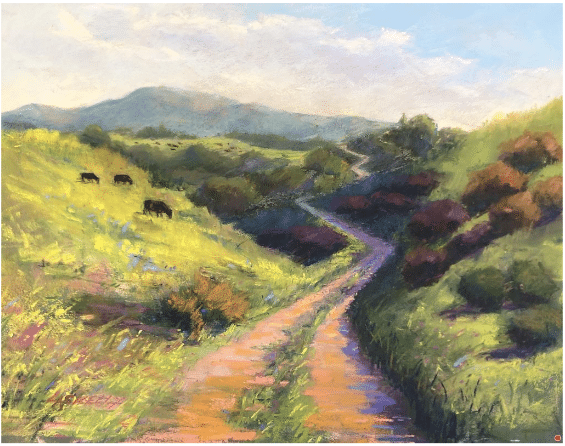
Lisa Skelly, The Long Way Home, soft pastel on pastel board, 11” x 14”
So I entered and I was hopeful but pretty sure it was not going to be my month to win. Surprise! I ended up winning and my dear friends and fellow competitors even called to congratulate me. I was touched, very surprised and honored. It was a feather in my beret, a big win for many reasons. I especially love that we all cheer for and support each other. We truly want our friends and fellow artists to do well. It’s an amazing rare community that we are part of.
So my advice is to be brave and enter, reach for the stars, dream big, put your work out there and be willing to learn more from entering than just the big prize. Celebrate your wins and your growth as an artist, then enter your best paintings and good luck to you all!
Entries are being accepted now for the January PleinAir Salon, judged by Lisa Skelly. The PleinAir Salon is open to all artists (not just plein air painters) with categories for Figure & Portrait, Still Life, Floral, and many more. Find out more here.
Lisa will be teaching pastels as one of 30 top faculty artists at this year’s Plein Air Live, March 6-8, 2024. This global virtual art conference offers over 40 hours of training from more than 30 of the world’s most skilled artists joining online from all over the country and the world. Participants gain access to closely-guarded techniques, daily breakout sessions, and an exclusive members-only group for continuous learning and networking. Learn more and register now.
My Greatest Teacher
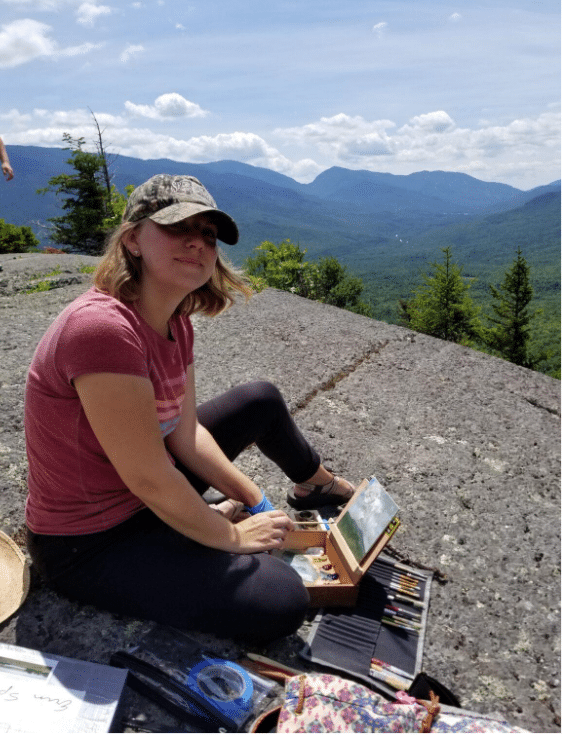
Plein air painter Erin Spencer
A special spotlight on someone from the plein air painting community you may not know yet: Erin Spencer on her Aha moment, and more.Art education: Although I never received a formal education in painting, I’ve always worked with my hands and pursued creative endeavors. And while I’ve learned a lot from direct observation of art, my greatest teacher has been nature herself. Time, passion, luck, and fortunate accidents have paved the road.
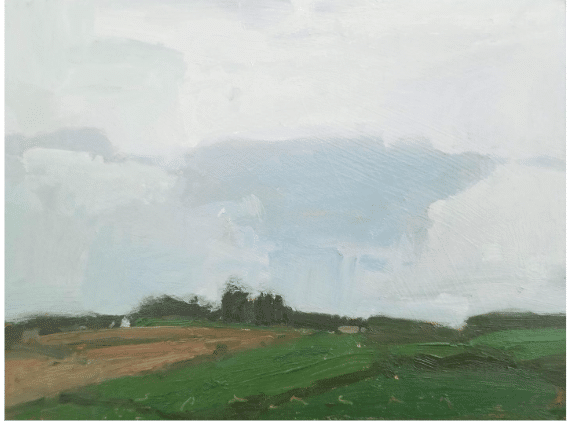
Erin Spencer, “Clouds Forming Over Ancient Lands,” 2022, oil, 6 x 8 in.; Private collection; Plein air; Erin’s prices range from $300-$6,500.
Painting style: For the most part, my painting style is impressionistic and tonal. Some of my smaller work is direct and observational, whereas my larger studio paintings are mainly indirect and rooted in memory. I feel that design leads the way in my work; subject matter and color are secondary.
Favorite subjects: I love clouds because they’re expressive and abstract, leaving room for artistic interpretation. When I first began painting, I wanted to paint clouds that moved beyond solid, floating bricks in the sky to clouds that felt like they were moving and full of light and energy. I’m still pursuing this goal, but my work has come a long way from the early days.
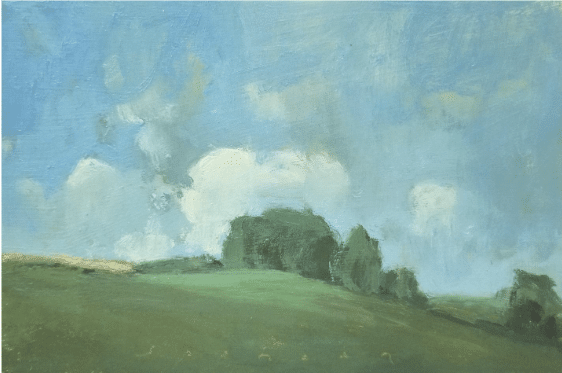
Erin Spencer, “From the Chapel Fields,” 2022, oil, 6 x 9 in., available from artist, plein air
Aha moment: Once I realized there’s no such thing as a failed painting — just one that isn’t finished — the door was flung wide open. Of course, there will be paintings that fall flat, but a good idea shouldn’t be thrown out just because it isn’t “working” at first. I’ve learned to give a painting time to evolve. I scrape back and layer on, allowing the piece to take on new life, breathe, move, and eventually land where it should.
What I would do for a living if I wasn’t an artist: Back in college I was sure I’d be an archaeologist, toiling away the hours digging in the dirt and studying people from the objects and evidence they left behind. Actually, this still sounds appealing to me, but if I was looking for less adventure, perhaps I’d be a gardener or furniture builder.
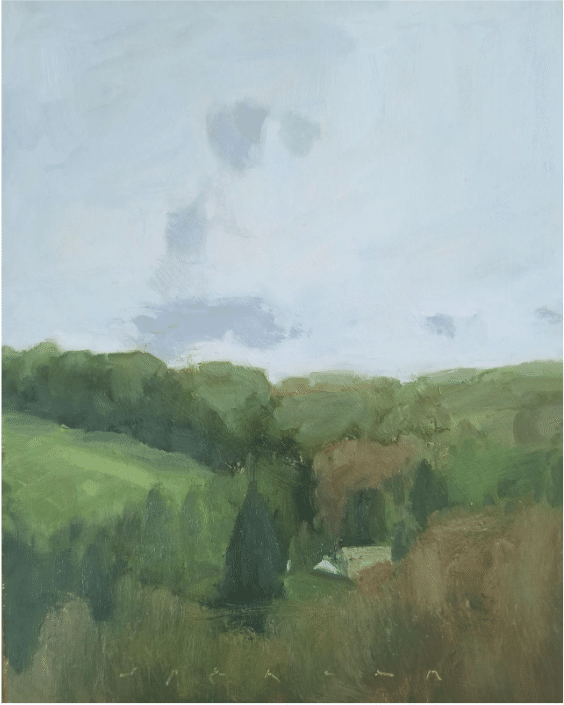
Erin Spencer, “Morning Walk,” 2022, oil, 8 x 10 in., available from artist, plein air
Favorite artists: From art history, the Dutch Golden Age painters, especially Rembrandt and Hals; Vuillard and Degas; and French and Russian Impressionists like Levitan. Realizing that abstract marks have been a hallmark of mastery for generations, I’m more confident in my own mark-making. I also love many contemporary landscape artists, including Simon Addyman for his color blocking and surface texture, and Denys Gorodnichyi for his sense of place and rich colors, which make me feel like I’m in Ukraine.
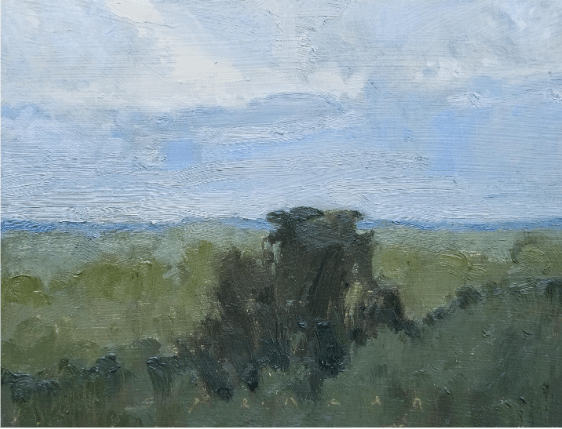
Erin Spencer, “Pearly Skies,” 2021, oil, 6 x 8 in., Available from artist, Plein air
The advice I wish I had received earlier in my painting career: Someone recently suggested that I let my paintings gather some dust before I declare them finished. Being inclined toward spontaneity and impulsivity, I still don’t do this well. But when I do permit my paintings to sit a while, I find ways to improve on them.

